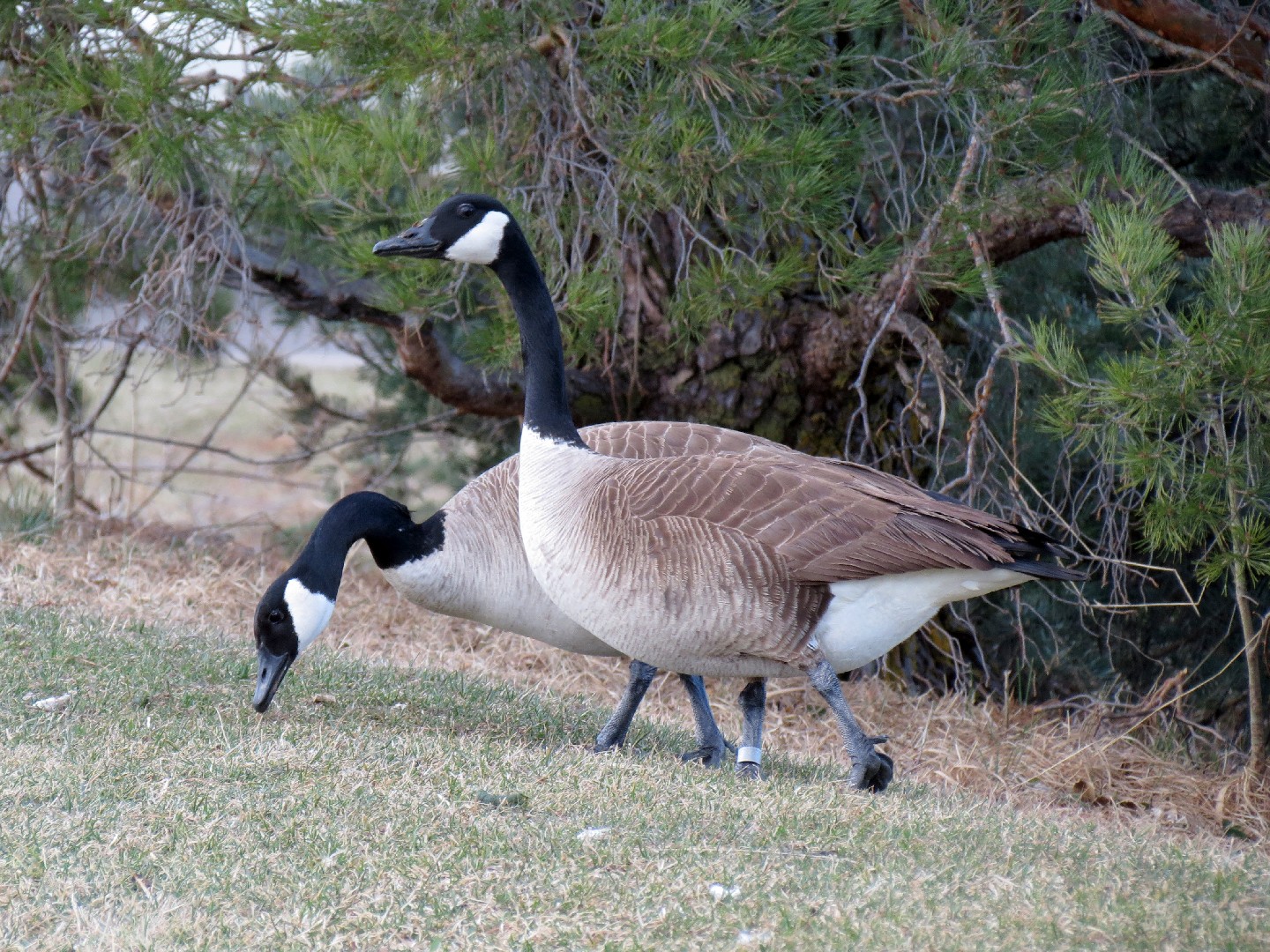Canada Goose
A species of Black geese, Also known as Common Wild Goose Scientific name : Branta canadensis Genus : Black geese
Canada Goose, A species of Black geese
Also known as:
Common Wild Goose
Botanical name: Branta canadensis
Genus: Black geese
Description
Though this large, widespread bird is mainly known for its aggressively territorial nature, often shown by spitting, chasing, honking, or attacking, the canada Goose does have more loving traits. They mate for life, and this species is one of the birds that has minimal “divorce rates.” Interestingly, they choose mates by size, so smaller geese will mate with other small geese, and larger geese with other large geese.
Size
76 - 110 cm
Life Expectancy
10-80 years
Nest Placement
Ground
Clutch Size
2 - 8 eggs
Incubation Period
1 brood
Number of Broods
25 - 28 days
Nestling Period
42 - 50 days
Feeding Habits
Canada Goose adapt their diet seasonally, feeding on grasses, sedges, and aquatic plants in warmer months and switching to berries, seeds, and agricultural grains in colder periods. They also consume insects, fish, and algae occasionally. Urban canada Goose scavenge through garbage and graze on landscaped grasses throughout the year.
Habitat
Canada Goose's habitat spans temperate wetlands, grasslands, and urban areas, often by freshwater bodies like lakes or ponds. Adaptable to various elevations, they are seen in forested regions and open fields, primarily where grass and grains are plentiful. Their ecological flexibility extends to coastal and estuarine zones, as they graze on manicured landscapes and remain vigilant to predators.
Nest Behavior
The female canada Goose selects the site and constructs the nest, adding down after the second egg. She incubates exclusively while the male stands guard. This starts in early spring, with egg-laying soon after nest completion.
Nest Characteristics
Canada Goose builds a large open cup-shaped nest on the ground, often on a muskrat mound or a similarly elevated site near water, with an unobstructed view. It's constructed with dry grasses, lichens, mosses, and lined with down and body feathers.
Dite type
Granivorous
People often ask
Migration Overview
Canada geese are known for their seasonal migrations. Their autumn migration can be seen from September to the beginning of November. The early migrants have a tendency to spend less time at rest stops and go through the migration much faster. The later birds usually spend more time at rest stops. Some geese return to the same nesting ground year after year and lay eggs with their mate, raising them in the same way each year. 
General Info
Feeding Habits
Bird food type
Bird Feeder Type

Ground
Sounds
Call
Recording location: Belgium
Call
Recording location: Belgium
Behavior
Canada Goose are renowned for their life-long monogamous partnerships and strong familial bonds, tending to mate with partners of a similar size. They partake in assortative mating, where typically the male is the larger individual in the pair. Their daily activities are inclusive of grazing on grass, dabbling in shallow waters for food, and socializing in large, often related flocks. Canada Goose's diet primarily consists of grains and grasses which they actively forage for. During breeding season, they display territorial behaviors through a series of threat displays and can become aggressive when provoked. Canada Goose select and defend their nesting territory, where the female is responsible for nest building and incubation, and the male stands guard. Goslings spend most of their early life feeding and resting, always under the watchful eye of their parents. As goslings mature, they may form larger 'gang broods' with other families. These complex social structures are maintained until the goslings reach a year old, often migrating together. Canada Goose's migration patterns are influenced by their breeding locations; northern populations embark on long migrations, while others may migrate shorter distances or remain stationary, depending on regional climates and resources. They are accustomed to returning to familiar migratory stopovers and wintering locales annually, often flying in iconic V formations. Their adaptability is evident as they can endure cold climates given sufficient food and open water.
Distribution Area
This species is native to North America. It breeds in Canada and the northern United States in a wide range of habitats. The Great Lakes region maintains a very large population of Canada geese. Canada geese occur year-round in the southern part of their breeding range, including most of the eastern seaboard and the Pacific coast. 
